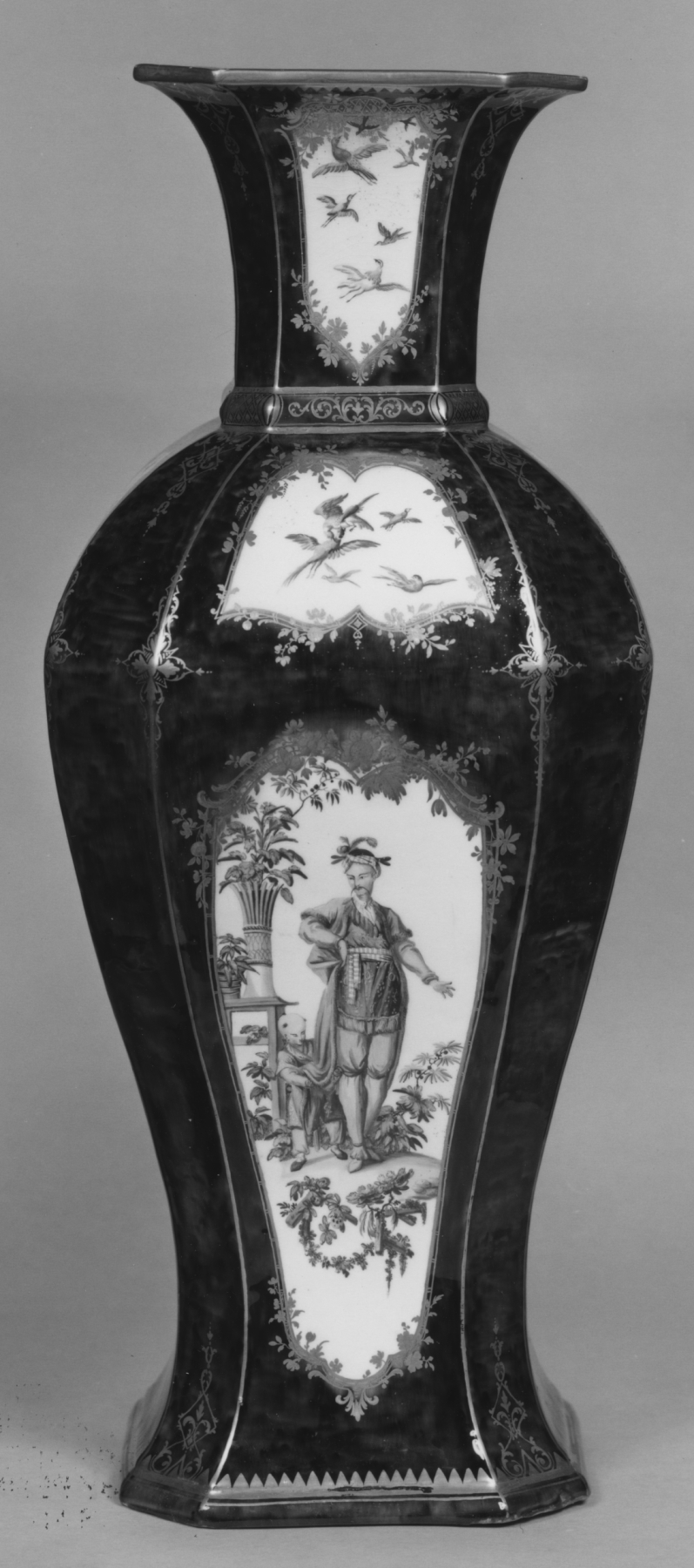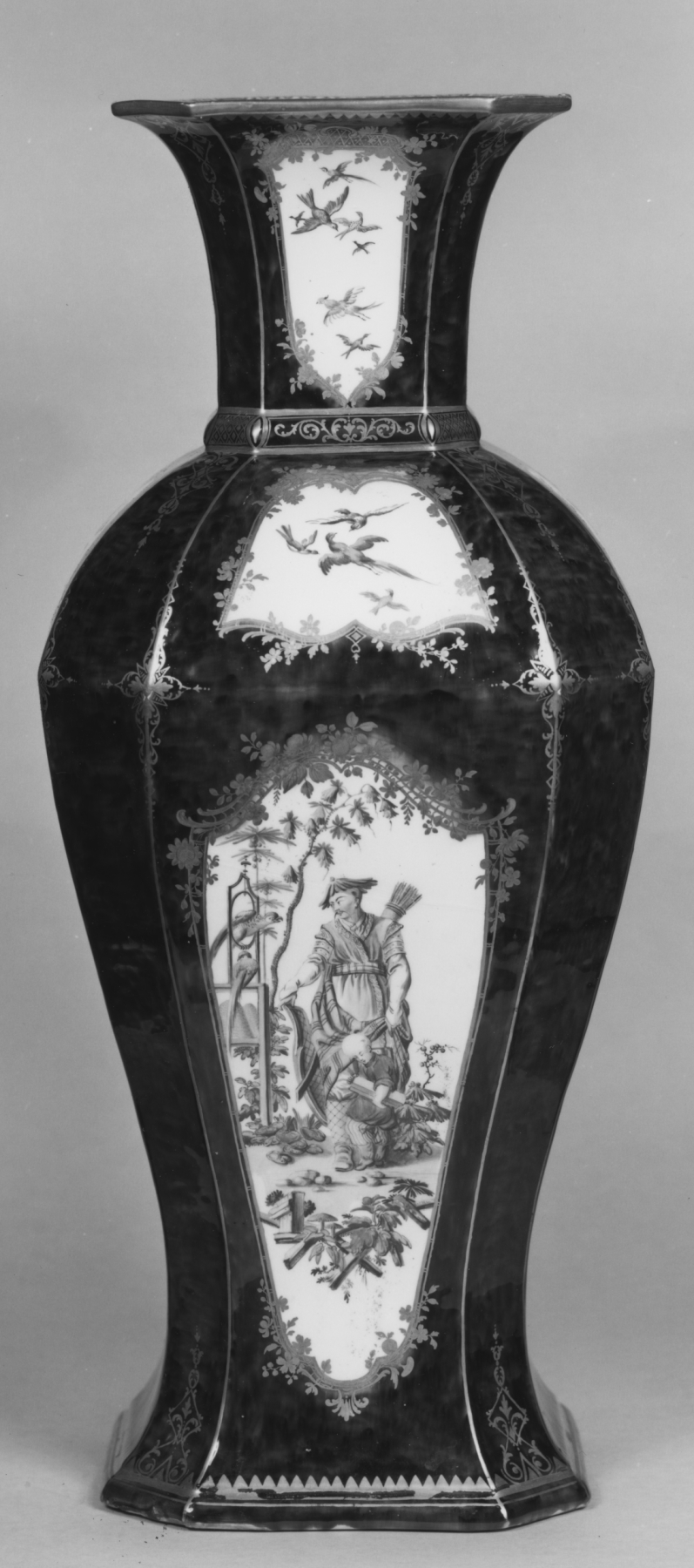Octagonal Vase
(18th and 19th Centuries )
The largest white (reserve) panels on this vase are decorated with "chinoiseries," which fancifully imagine life in the “East” for a European audience. Chinoiseries remained popular throughout the 18th century and could be found on paintings, tapestries, and dresses, as well as mirrors, teapots, and beds. When this vase was made Europeans had only recently come to understand the complex technique of how porcelain was manufactured in China. This unusually large vase was made in England, but mimics French fashions; these particular scenes are taken from engravings by Jean-Joseph Balechou and Pierre Aveline after François Boucher's "Les Delices de l'Enfance," ca. 1748.
Inscription
Provenance
Provenance (from the French provenir, 'to come from/forth') is the chronology of the ownership, custody, or location of a historical object. Learn more about provenance at the Walters.
D. C. Marjoribanks; St. George Henry Lowther, 4th Earl of Lonsdale; Hugh Cecil Lowther, 5th Earl of Lonsdale; George R. Harding, London [date and mode of acquisition unknown]; Henry Walters, Baltimore, 1911, by purchase; Walters Art Museum, 1931, by bequest.
Conservation
| Date | Description | Narrative |
|---|---|---|
| 5/12/1966 | Treatment | other |
Geographies
United Kingdom, England, London (Place of Origin)
Measurements
21 1/8 in. (53.7 cm)
Credit Line
Acquired by Henry Walters, 1911
Location in Museum
Not on view
Accession Number
In libraries, galleries, museums, and archives, an accession number is a unique identifier assigned to each object in the collection.
In libraries, galleries, museums, and archives, an accession number is a unique identifier assigned to each object in the collection.
48.771








